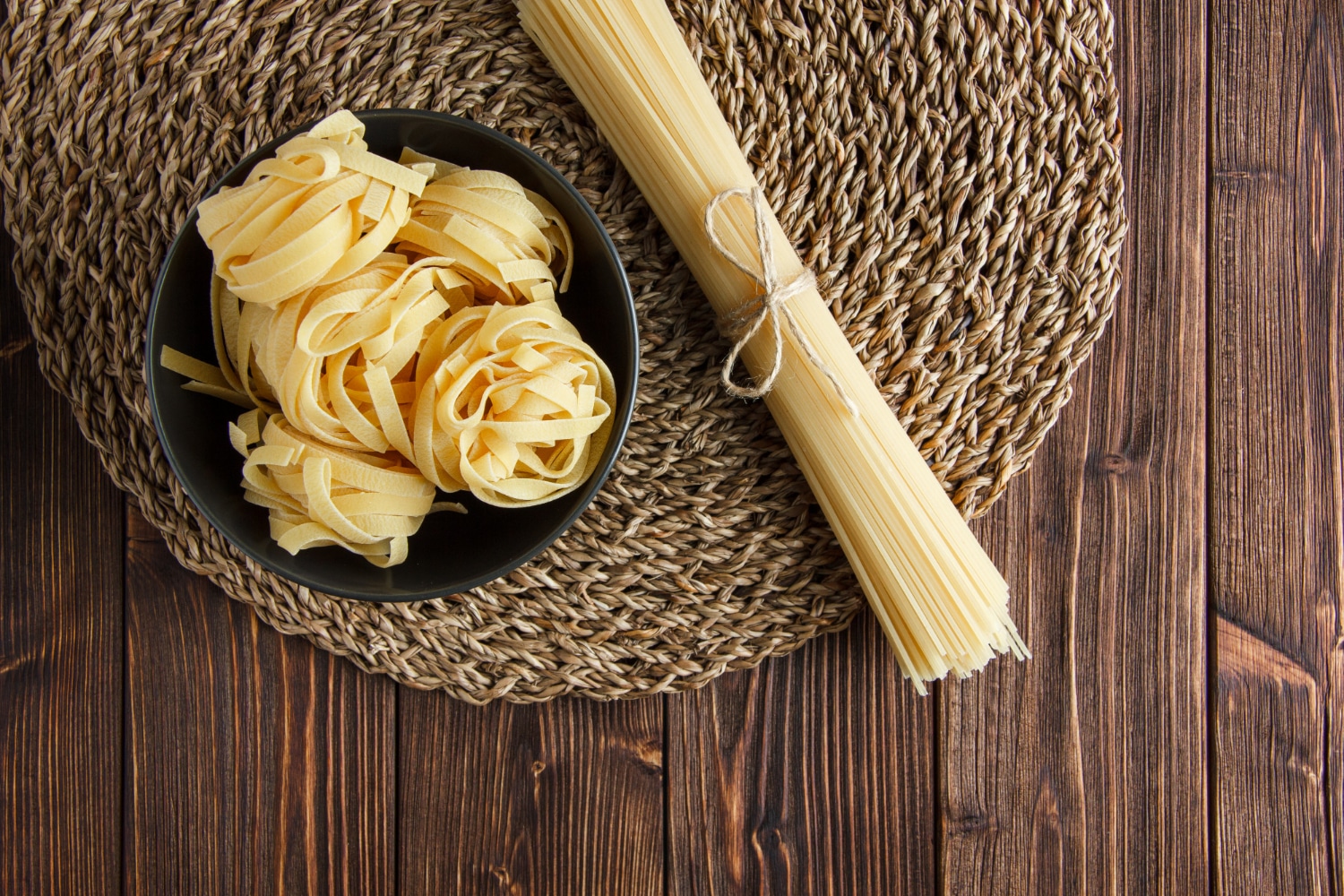Pasta is available in different varieties, with multitudes of shapes and sizes ranging up to 300+ available variants. Shape, size, and flour type create differences in appearance and flavor. Spaghetti and fettuccine are some of the common variants of pasta.
What are the differences between spaghetti and fettuccine? Traditionally, there is a difference between spaghetti and other ribbon-type kinds of pasta like fettuccine. While these two are available in fresh and dried variants, these two kinds of pasta use a specific cooking method.
Does Fettuccine Taste Different than Spaghetti?
Spaghetti and fettuccine are both pasta variants but is created using different ingredients and proportion of eggs. Starch is the form of flour that provides structure and texture to your dough. When mixed with water, it makes the dough workable and could be extracted or sliced into stripes. Other manufacturers include egg to the pasta to provide elasticity and texture to your dough.
Packaged durum wheat pasta used in making spaghetti dough is processed in unique factories. This creates a granular texture that fits on the “al dente” doneness. Spaghetti uses this specific flour due to its size—it is a small cross-section, and it requires tighter starch to prevent it from losing its structure.
Since fettuccine has a higher egg ratio, it creates a fuller flavor profile than spaghetti. Eggs are the key to producing a fluffier pasta dough. It can also improve the overall flavor of your pasta dough. It also creates a difference in texture while maintaining the delicate structure a pasta hold.
Although fettuccine has higher egg content, this variant still has a minimal egg ratio than Asian noodles used in ramen and stir-fry noodles. The egg found on pasta dough lends its flavor to complement your meat and tomato sauces. Fettucine can also work on the thicker sauce that uses butter, cream, and cheese (like alfredo sauce other white sauces).
The blandness of spaghetti is perfect for sauces that have thinner sauces made with butter or with olive oil. You may also mix your spaghetti noodles with more piquant flavor tones like pepper, capers, olives, garlic, and herbs. You can balance out the flavor by mixing the acidity of tomatoes or the creaminess of cooking cream.
Authentic fettuccine must be made with real eggs. Manufacturers create pasta dough shaped like a Fettucine. Still, it doesn’t have the actual eggs that produce the better-tasting pasta. Dried fettuccine or manufactured pasta tends to cost-cut products to make it more economical to other consumers.
Is Fettuccine Thicker than Spaghetti?
Fettucine is popular in Italy’s Tuscan and Roman regions, and it is made fresh from home. What makes it different from other pasta types is its egg content. Egg provides a yellowish tone to your pasta dough while providing elasticity to your pasta. This offers a better surface for you to easier cut your pasta.
This pasta is made by mixing flour (not necessarily wheat-based), and it’s mixed with egg and water until it is good to knead. If your pasta dough is good, the sound indicator doesn’t stick to the surface while it is still be used to knead your dough.
In American standards, Fettucine is mixed with thicker sauces like alfredo sauce and other cream-based toppings. Since it has a thicker texture, you can use fettuccine on meaty tomato-based sauces like Bolognese. It can be also be mixed with seasonal vegetables and mixed with intense herbs and oils.
While it is understood that fettuccine is the thicker pasta than spaghetti, you still need to identify when to use the specific pasta type for your cooking. The most helpful way for you to decide which pasta to use is by following the rule of balance. Listed below are some factors to consider in preparing the sauces for your pasta:
- Thinner and lighter types of pasta sauces work well with thin strands of pasta. More delicate pasta shapes have a smaller surface area to hold your sauce. Using oil-based dressings will work to your advantage.
- Thicker and denser pasta shapes require thicker and fuller pasta sauces. Wider pasta shapes may have ridges that can collect spices and meat properly—which can be done using thick, cream-based sauces.
- Lighter pasta types can function as appetizers. Consuming pasta with more delicate sauces has a warm-weather feel into eat. You can prepare angel’s hair pasta for Pasta Primavera, or you may mix light proteins as clams and pesto will work best.
- Heavy pasta types, on the other hand, are suitable for the main course. This product is provided a hearty, comfortable food feel. Eating thick pasta will give a “stick to your bones” feel in to eat, and it can keep you warm for more extended periods. Fettuccine can work on chicken and meatballs since it can hold larger proteins.
Can You Substitute Spaghetti for Fettuccine?
As mentioned earlier, spaghetti and fettuccine have two different structures, shape and flavor. Suppose you are purchasing dried variants of these kinds of pasta. In that case, you may confuse yourself on identifying the difference between spaghetti and fettuccine. By identifying the thickness of your spaghetti, you can quickly identify the pasta you are using.
Spaghetti noodles have a more delicate structure. It has an elliptical, smaller cross-section which makes it easier to prepare. Since spaghetti pasta is made with pure durum wheat flour and water alone, this has more elasticity and “bite” into it.
On the other hand, fettuccine has a broader and flatter surface area than spaghetti. This provides volume and structure for it to fit on the thicker, more robust sauces. Fettuccine works perfectly on quintessential spices like carbonara, Bolognese, and heavy pesto variants.
If you don’t have fettuccine, you can still use your spaghetti pasta for your thick sauces. You can reduce the thickness of your spices by placing stock or water in your sauce. Pasta water can also be introduced. Just make sure that your pasta water is not mixed with heavy amounts of salt.

